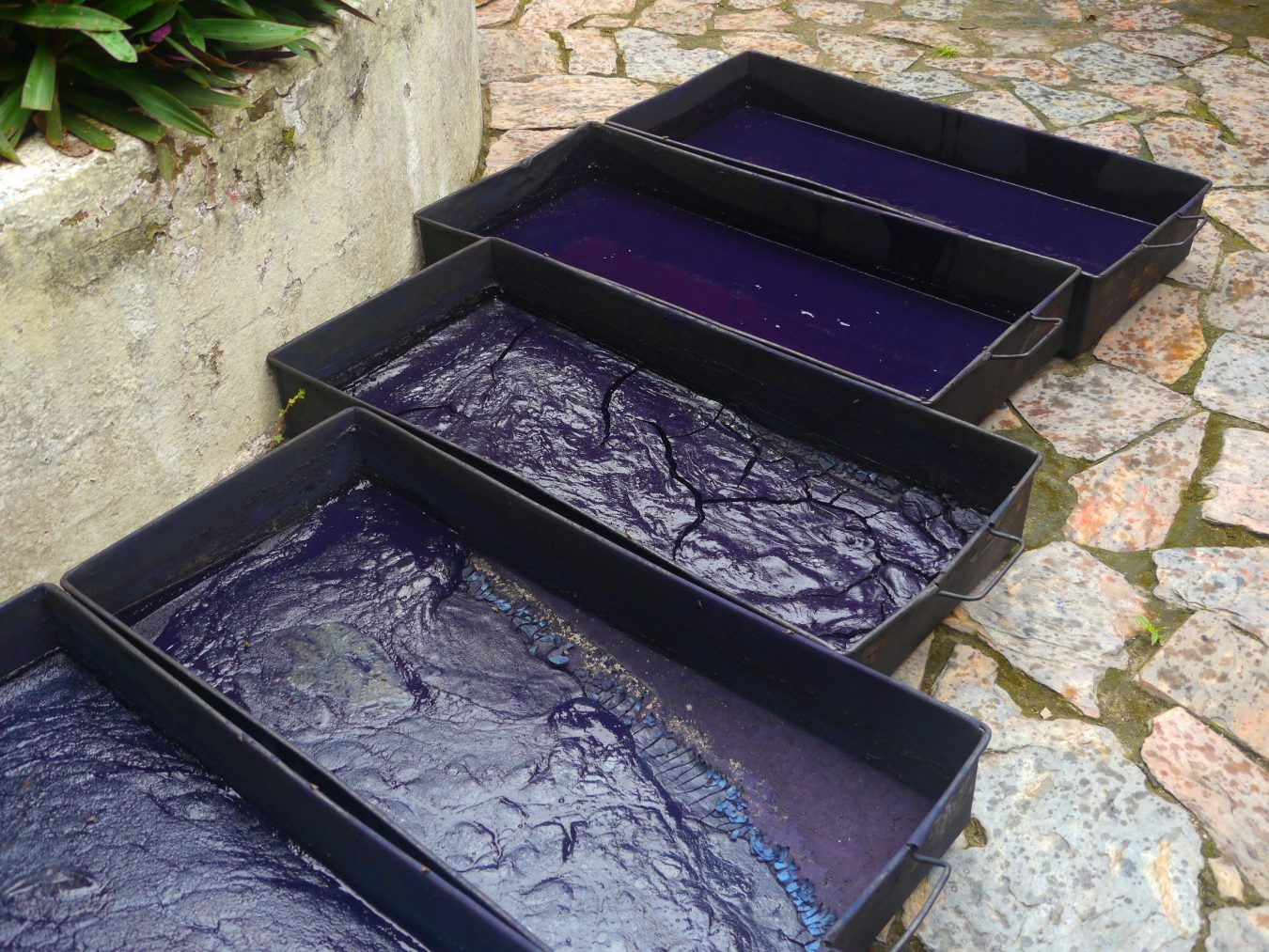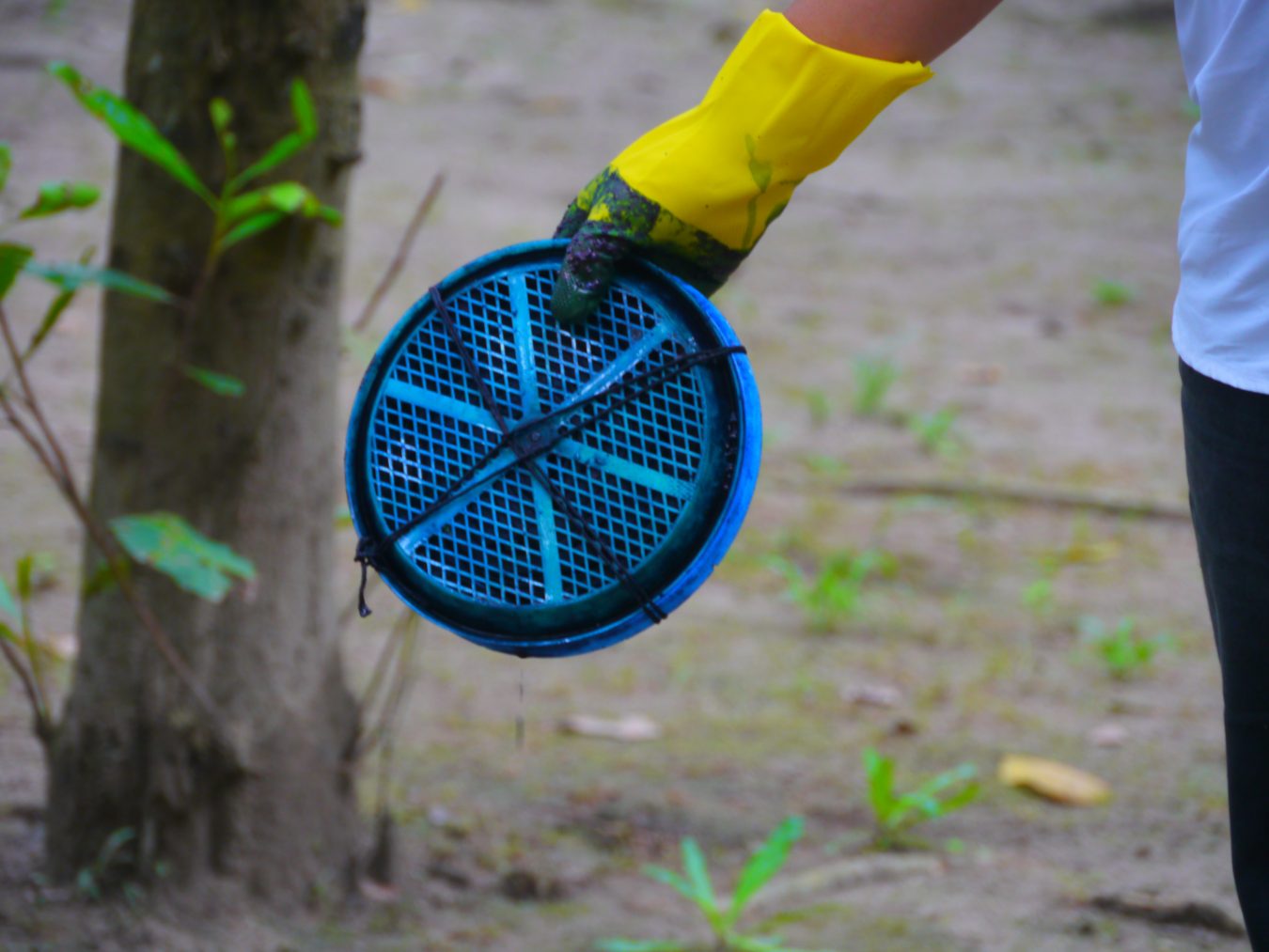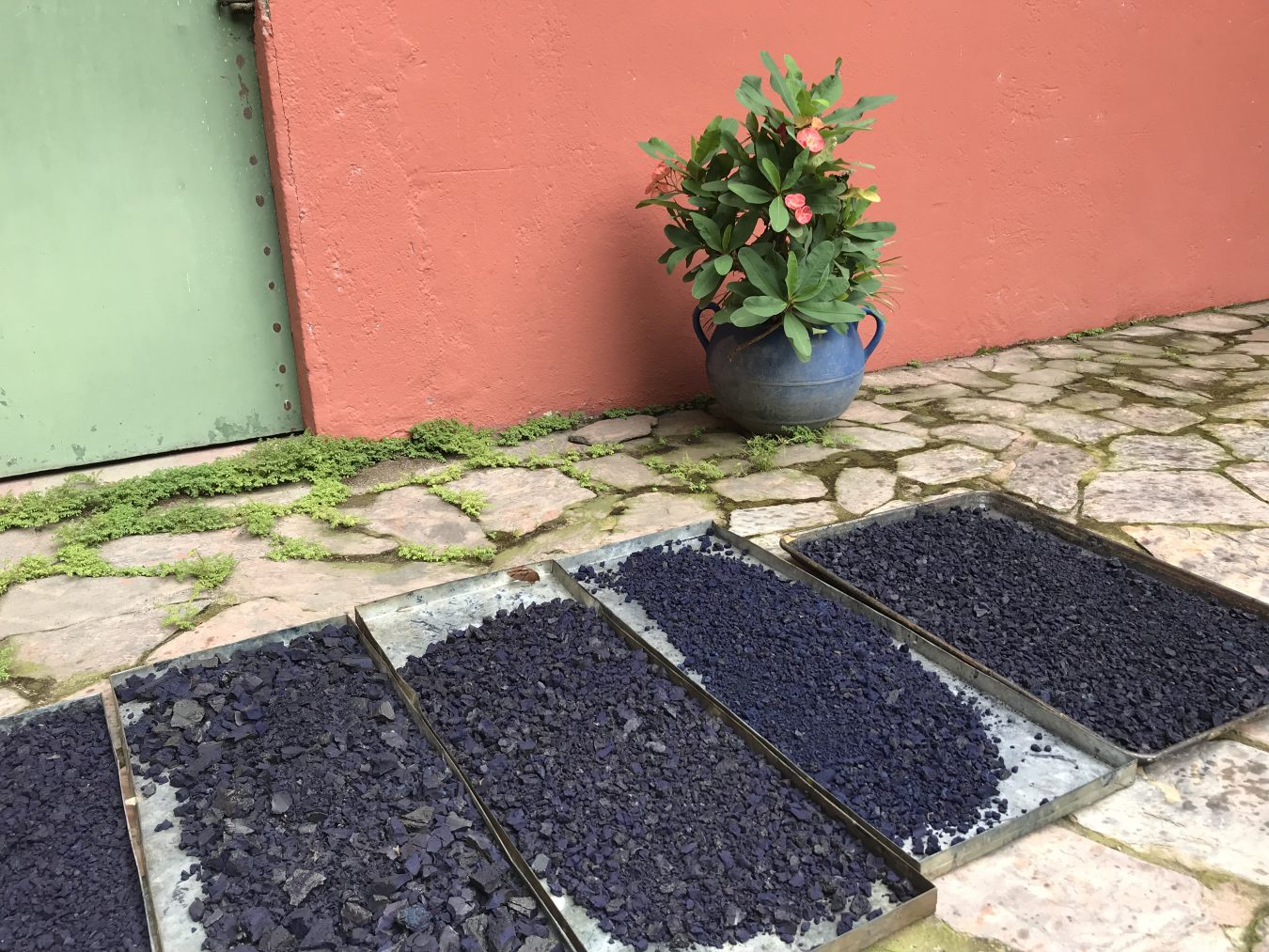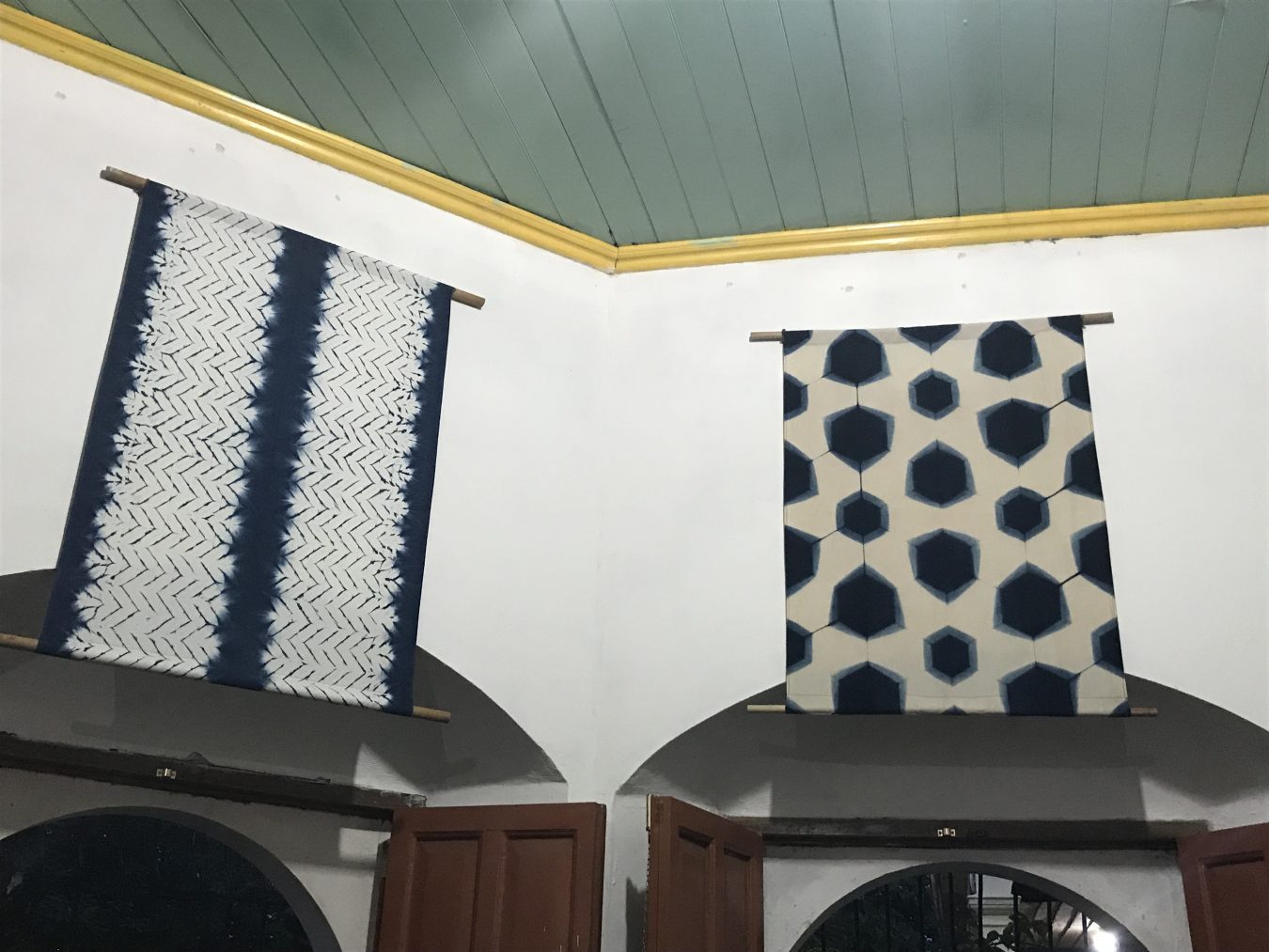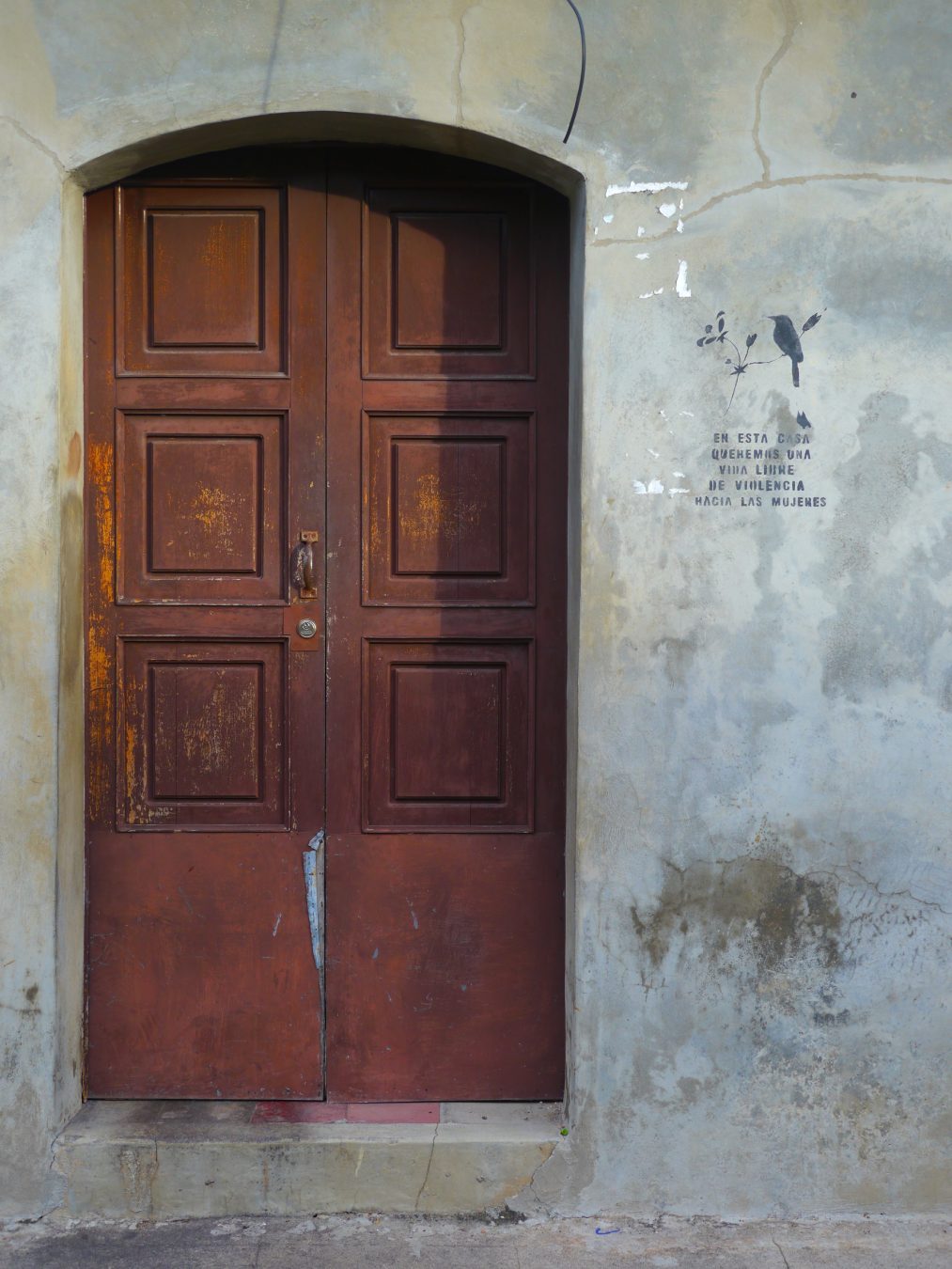The waves froth and splash against the side of the tank. Two men are vigourously stirring this hot-tub-sized square pool, trying to add as much oxygen as they can to the yellow-green water inside. The liquid slowly darkens. As they stir, the once-mustard-yellow solution turns first green, then a toothpaste aquamarine, and eventually sapphire. It’s just the first step in creating indigo—the world’s oldest dye—the traditional way, here on an organic farm in El Salvador.
Indigo textiles were once reserved for royalty and the very wealthy. Thanks to the creation of synthetic indigo, wearing blue is now available to everyone. Today, nearly all blue clothing, from t-shirts to jeans, is made from the artificial version. However, this form requires a mordant to adhere the colour to the fabric, and most are bad for the environment; these nonylphenol ethoxylates are highly toxic to aquatic organisms, and animal studies have shown exposure leading to reproductive and developmental problems.
Consumers who prefer quality, not to mention protecting the environment, favour natural indigo—ideally made organically and traditionally.
India is thought to be the originator of the dye, but the ancient peoples of Central and South America also historically made it. A 6,000-year-old indigo fabric was discovered in Peru just a few years ago. The Maya people of Central America and Southern Mexico considered indigo sacred and used it only for ceramics and ceremonial clothing. When the Spanish arrived in what is now El Salvador in 1521, they were shocked at the dark richness of Mayan indigo, as the product supplied to Europe from India beginning in the Greco-Roman era was much paler in colour. Due to their production methods and the high indigotin content of the local indigo plant, Mayan indigo became so valuable the Spanish called it azul oro (blue gold) and used it as currency and a high-value trading commodity.
El Salvador’s civil war, from 1980 to 1992, almost resulted in the complete loss of the ancient methods of making indigo here. But thanks to one 72-year-old woman named Rhina de Rehmann, the country’s natural indigo production is being resurrected. The world now has two sources of handmade organic indigo: a farm in India, and this farm in Eastern El Salvador run by de Rehmann.
The sprawling operation, called Hacienda Los Nacimientos, is located outside Suchitoto, a pretty cobblestoned town with colonial architecture. It’s near Lago Suchitlán, a prime bird-watching spot, and about an hour-and-a-half drive from El Salvador’s capital, San Salvador.
In addition to growing and processing indigo by hand, de Rehmann’s farm has over a dozen organic crops, including cashew trees (she exports the fair-trade nuts to France), turmeric, hibiscus, neem, and moringa (known as the miracle tree for its health benefits and curative properties). Travellers to El Salvador can visit Hacienda Los Nacimientos to see how indigo is hand-processed from plant to pigment. Stalks of the seemingly plain green shrub are soaked in water before the liquid is dramatically stirred to turn it from yellow to cobalt. Once the sediment falls out of the solution, it’s heated through a secret process that de Rehmann developed; this procedure, combined with her organic plants, results in her superior product.
After enjoying a snack of El Salvador’s national dish, pupusas, and a cup of the country’s excellent coffee, visitors to Hacienda Los Nacimientos can also design and dye their own scarves. The workshop is held in a small clearing, and sample scarves and tapestries are strung up between trees to provide design inspiration. Attendees can choose tools like marbles, elastic, string, wooden blocks, and even pupusa trays to create their desired patterns on the cotton scarves. Staff are on hand to provide guidance and to help ensure designs come out as intended.
Donning rubber gloves and an apron, participants dip their tied-up creations several times into pails of the deep-blue pigment; essential to bringing out indigo’s sapphire colour is exposing the fabric to air between soaks. Rinsed with water and receiving a final dip in vinegar (made from the farm’s cashew flowers) to set the dye, the scarves are then unfurled and the patterns revealed. Once dry, they’re ready to take home.
Most Hacienda Los Nacimientos visitors stay in Suchitoto; the town’s best hotel is Los Almendros de San Lorenzo, a 200-year-old colonial mansion with gardens and a pool. In addition to snacking on street foods and watching elderly ladies hand-roll cigars, indigo aficionados will want to stop into Irma Guadrón’s art gallery and workshop, Arte Añil Gallery.
Across from Suchitoto’s stunning Santa Lucia church, Arte Añil features indigo clothing and fabrics that Guadrón designed herself. Art lovers will want to invest in one of her exquisitely-dyed coconut or eucalyptus tapestries; the precise lines and dark blues of her masterpieces show off this highly-desired pigment to its best effect. It will be hard to look at blue fabric the same way again.
Discover a hub of inspiration in our Design section.

